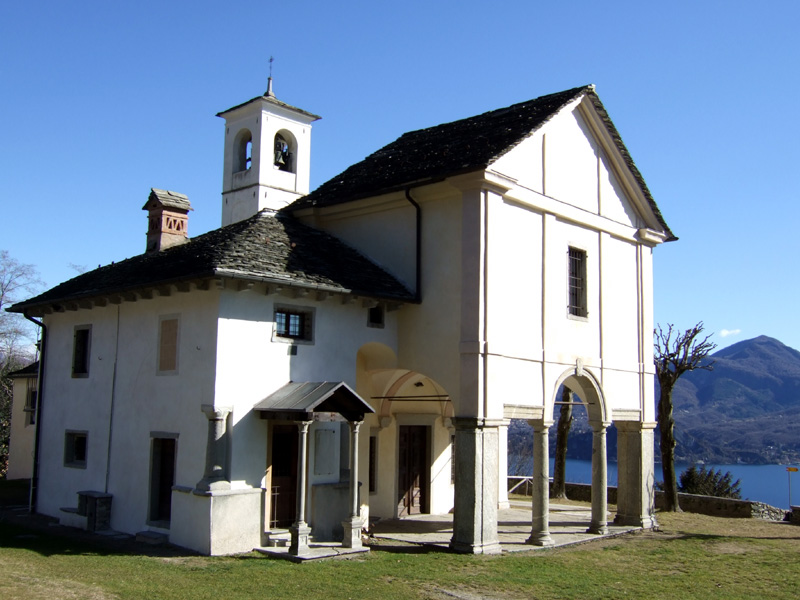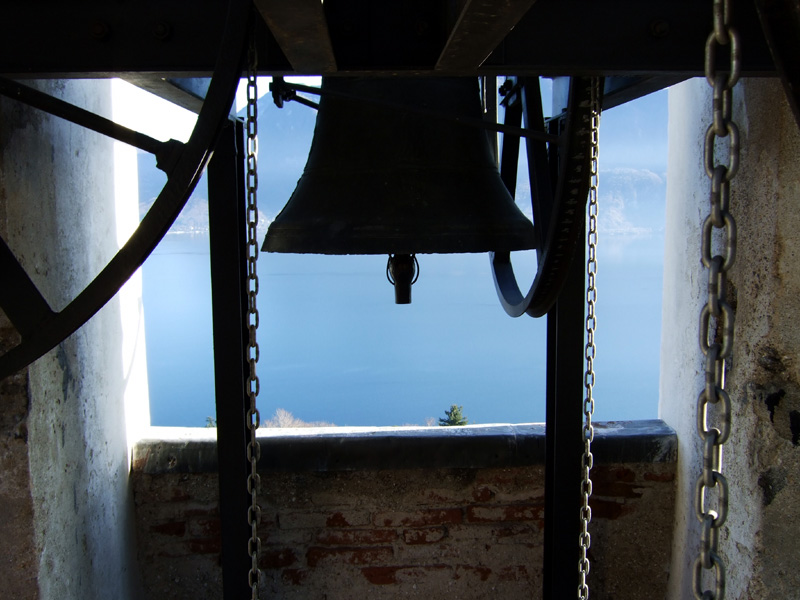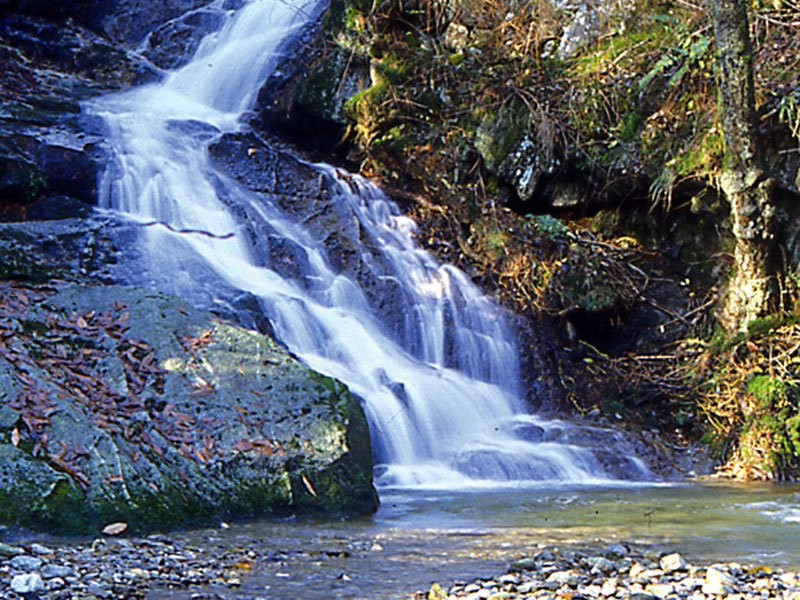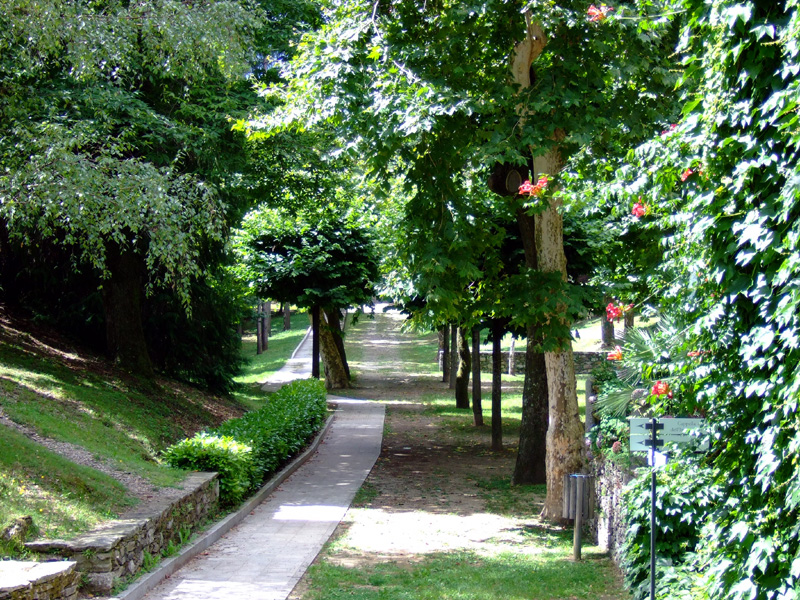Protected Area
Identity Card
- Land Surface Area: 199.60 ha
- Regions: Piemonte
- Provinces: Verbano-Cusio-Ossola
- Municipalities: Ghiffa
- Establishment Measures: LR 51 07/09/1987 - L.R. 19/2009 e L.R. 19/2015
- PA Official List: EUAP0358
- Park Authority: Ente di gestione dei Sacri Monti
Sacro Monte della SS. Trinità di Ghiffa Reserve
Except for the limited surface on which the Sanctuary lies, covered
with lime trees and centuries-old plane trees, the wood covers the
remaining part of the Reserve: from Sacro Monte (360m) it climbs to the
summit of Mt. Cargiago (713m) and the surroundings of Pollino village
(790m) and finally gets to Caronio country hamlet (500m).
In this
area, the wood is dominated by chestnut trees and other broadleaf
trees, above all oaks, lime trees, maples, ash trees, alders, and
birches and is characterized by shrubs like the holly, the butcher's
broom, the hazelnut tree, and the medlar tree.
Moreover, the woodland represents an essential ecosystem populated by
roe deer, badgers, foxes, squirrels, martens, stone martens, while the
wild boars and the deer are only occasional. Among the birds, it is
necessary to mention the presence of the black woodpecker, a rather
rare species living above all in the peaceful mountain woods.
The monumental complex characterizing Sacro Monte della SS. Trinità
originated from the presence of an ancient late Romanesque-style
Oratory.
The present Sanctuary was built between 1605 and 1618. After the
demolition of the original Romanesque-style church, a large building
was created as a continuation of the 16th century rectangular building
dedicated to the Holy Trinity, which had been built close to the
original Oratory. This section corresponds to the first span of the
present Sanctuary and preserves the ancient front door facing the
access path and two lateral windows. It still preserves the
representation of the Holy Trinity, which is considered miraculous and
has become the object of popular devotion.
Subsequent rearrangements led to the completion of the building between
1646 and 1761, with the addition of the bell tower, the portico in
front of the Church, and the completion of the façade.
What you can see today is probably part of a greater and more
articulated project which could not be completed: it should represent
episodes of the Old and New Testament. The three 17th century chapels,
dedicated to the Coronation of the Blessed Virgin Mary, St. John the
Baptist, and Abraham, were built on the shape of Sacri Monti from
Lombardy and Piedmont, in a strong Counter-Reformation religious
climate. The monumental area is completed by the Via Crucis portico
built in 1752 and closed in 1761 in the north by Cappella
dell'Addolorata.
The beautiful urban setting and the natural beauty of the place have
contributed to make Sacro Monte not only a place of deep popular
devotion, but also a meeting point and a place where traditional fairs
and markets are held.
The Environment
As far as morphology is concerned, it is possible to identify two environmental units: the steep eastern slope (towards Lago Maggiore) and the western slope (rio Ballona basin), characterized by a gentler slope rich in small watercourses.
Except for the area of the cliffs, where it is always spontaneous, the wood was once divided between high forest and coppice wood, meeting the local economic needs which also justified the abundance of pastures, pastures surrounded by trees, and cultivated fields.
The current use of the wood is vice versa dominated by coppice wood, which has become the main covering. In the recent past the reforestation with exotic conifers - mainly white pine - has been carried out on the land which was no longer used as pasture, while the locust tree has rapidly colonized other areas subject to fires, damaging the precious local species.
The recent vegetational and naturalistic surveys included in Piano di Assestamento Forestale are the basis for the forest, naturalistic, and landscape requalification. This large wood surface, with its homogeneity and continuity, represents as a consequence an important and absolutely necessary ecosystem for all the naturalistic components deriving from it. This is above all valid for the faunistic aspects present in considerable varieties.
We signal the permanent presence of roe deer, badgers, foxes, squirrels, martens, stone martens, while the wild boars and the deer are occasional. Among the avifauna, it is necessary to mention the presence of the black woodpecker, a rather rare species living above all in the peaceful mountain woods. There are also different species linked to the wood of the hill like the great-spotted woodpecker, the green woodpecker, the jay, the fieldfare, the woodpigeon, and the buzzard.
In the wetland of rio Ballona and affluents it is pleasant, even if rare, to meet the deeper, the common kingfisher, and even the gray heron.
Among the minor fauna, you can frequently observe the common toad, the grass frog, the spectacled salamander, the common newt, the asp viper, the adder, and the rat snake.











